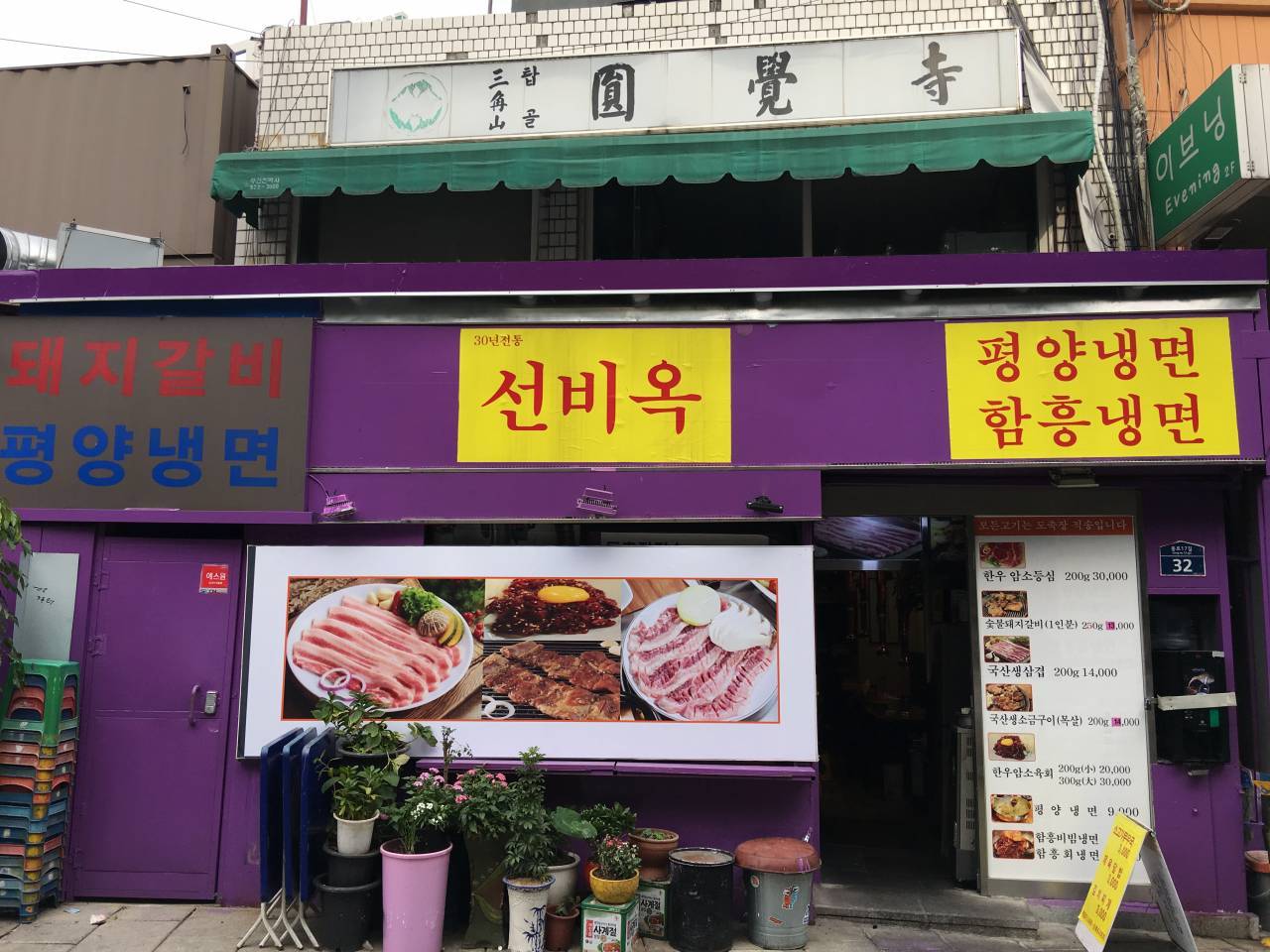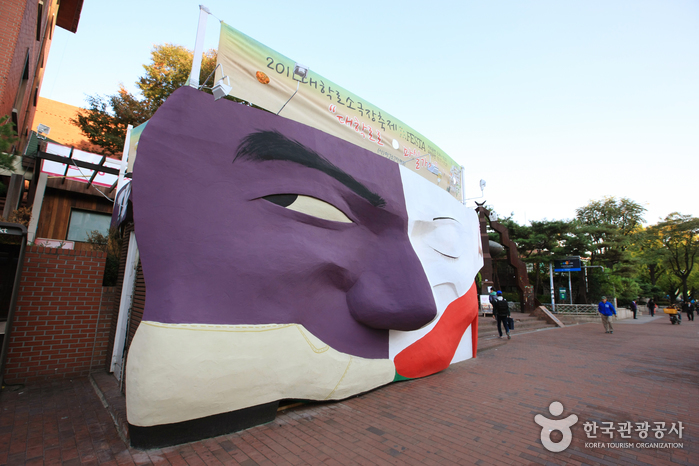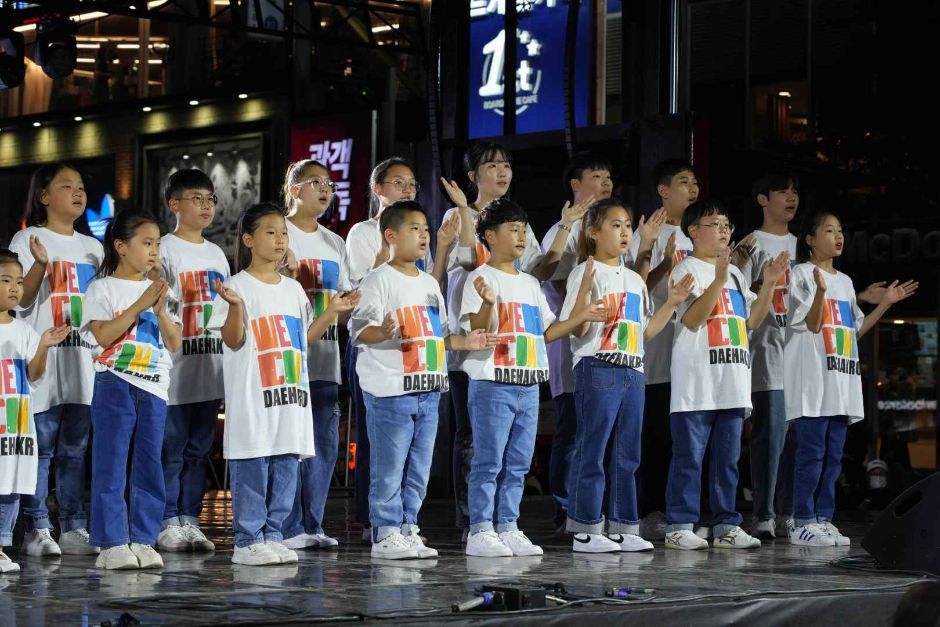Hwangudan Altar (환구단)
19.2Km 2020-05-07
112, Sogong-ro, Jung-gu, Seoul
+82-2-3396-5842
Hwangudan Altar, also called Hwandan Altar, refers to an altar complex for the rite of heaven. The rites were first performed in the Goryeo dynasty by King Seongjong in the first month of 983 (2nd year of his reign), but was repeatedly adopted and abolished, and eventually stopped at the start of the Joseon dynasty.
Then in 1456 (2nd year of King Sejo), the practice was temporarily standardized and the rites were performed at Hwangudan Altar again in 1457. However, rites were again abolished in 1464 (10th year of King Sejo). It wasn’t until 1897 (34th year of King Gojong) when the Joseon dynasty was renamed as the Korean Empire and King Gojong ascended to emperor, that the rite was revived.
Now, Hwangungu Shrine and three stone drums stand at the location of the former altar complex. The three stone drums symbolize the instruments used for the rites. The shrine was completed in 1899, two years after the altar was started in 1897. Today, the Hwangungu Shrine still stands within the hotel grounds of the Westin Chosun Hotel.
Chanyangjip (찬양집)
19.2Km 2021-03-29
5, Donhwamun-ro 11da-gil, Jongno-gu, Seoul
+82-2-743-1384
A popular attraction since the early 1970’s, this rather shabby and hard-to-spot restaurant has attracted many customers with its representative menu item, haemul kalguksu (seafood noodle soup). The soup is delicious and plenty enough for a hearty meal compared to its relatively low price. The noodles are chewy as they are freshly prepared every day and the clam-broth soup is full of flavor. The appearnce of this restaurant may seem old, but it's a recommended spot for a simple and delicious meal.
Seonbiok (선비옥)
19.2Km 2021-03-19
32, Jong-ro 17-gil, Jongno-gu, Seoul
+82-2-764-2214
This is a Korean cuisine located in Jongno, Seoul. A restaurant located near Tapgol Park. The best menu at this restaurant is grilled spareribs.
Daehangno (University Street) (대학로)
19.2Km 2021-03-25
104, Daehak-ro, Jongno-gu, Seoul
+82-2-2148-1114
Daehangno is an artistic neighborhood that stretches 1.1 kilometers from Jongno 5-ga Intersection to Hyehwa-dong Rotary. The area is filled with culture and performing arts facilities, with the center of all this being Marronnier Park. Visitors can find performances taking play every day at the many theaters large and small, as well as restaurants serving a range of cuisines. The area is especially active on weekends and during the street festival period.
Uireung Royal Tomb [UNESCO World Heritage] (서울 의릉(경종, 선의왕후) [유네스코 세계문화유산])
19.2Km 2021-06-03
146-20, Hwarang-ro 32-gil, Seongbuk-gu, Seoul
+82-2-964-0579
Uireung is the royal tomb of King Gyeongjong (reign 1720-1724), the 20th ruler of the Joseon dynasty, and his second wife, Queen Seonui.
King Gyeongjong was the first son of King Sukjong and Janghuibin, who was one of King Sukjong’s concubines. King Gyeongjong, who was born weak and anemic, died four years after becoming the king, without any great political achievements. Uireung tombs differ from the other royal double tombs in that they are not placed side-by-side. Instead, according to geomantic theory, one tomb has been placed directly behind the other one. The arrangement also shows that when making tombs, Korean ancestors did their best to protect the natural environment. Another feature of Uireung Royal Tomb is the stone fence raised using twelve stone posts. Each post has a letter inscribed, representing one of the twelve sibijisin gods.
Kumkang Land Rover - Jongno Branch [Tax Refund Shop] (CL종로지점(금강 랜드로바))
19.2Km 2024-06-27
81, Jongro, Jongno-gu, Seoul
-
Welcome Daehakro (웰컴대학로)
19.2Km 2024-10-08
104 Daehak-ro, Jongno-gu, Seoul
+82-2-743-5220
Welcome Daehakro is a festival devoted to celebrating various types of performances including non-verbal, traditional, musical, plays, and more. Started in 2017, the festival attracts visitors from around the world every fall.
Olive Young - City Hall Station Branch [Tax Refund Shop] (올리브영 시청역)
19.2Km 2024-04-22
1, Sejong-daero 16-gil, Jung-gu, Seoul
-




![Uireung Royal Tomb [UNESCO World Heritage] (서울 의릉(경종, 선의왕후) [유네스코 세계문화유산])](http://tong.visitkorea.or.kr/cms/resource/80/2690680_image2_1.jpg)
![Kumkang Land Rover - Jongno Branch [Tax Refund Shop] (CL종로지점(금강 랜드로바))](http://tong.visitkorea.or.kr/cms/resource/95/3313995_image2_1.jpg)

![Olive Young - City Hall Station Branch [Tax Refund Shop] (올리브영 시청역)](http://tong.visitkorea.or.kr/cms/resource/77/2878577_image2_1.jpg)
 English
English
 한국어
한국어 日本語
日本語 中文(简体)
中文(简体) Deutsch
Deutsch Français
Français Español
Español Русский
Русский